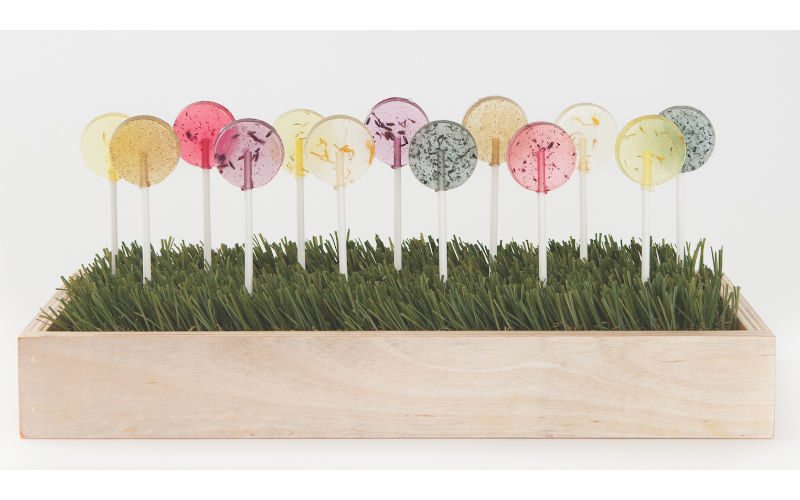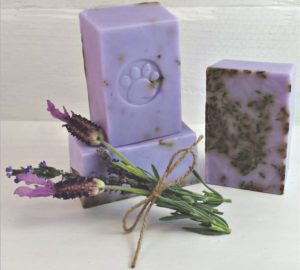
Herbal Infusion: Taking the Country by Storm
Before we get started, let me be clear that this isn’t going to be yet another article about how millennials are driving our growing and gardening trends. Well, not exclusively anyway. I want to talk about a different kind of trend. One for a product that’s making its triumphant return to mainstream since its original popularity back in the 1960s — herbs.
As a grower, it’s our mission to stay on top of all kinds of developments. Consumer trends lead to growing trends. Growing trends help support consumer habits. And the circle of life continues. For herbs that circle began in the culinary world but has since expanded considerably. What that means for you, as a grower, is you can take advantage of this change by simply digging a little deeper into the trend itself to understand its hidden opportunities.
As you know, the whole edibles and fragrants category is blowing up right now. In fact, it’s been doing that for the past few years, if our own industry experts have anything to say about it. For example, last year alone edibles were considered among the top four selling green goods at garden centers across the country. And herbs have a lot to do with that.
Herbs in Action
If you’ve paid any attention to social media, you can visually see the explosion for yourself, as edible-related posts represent one of the fastest growing segments on hubs like Instagram and Pinterest. Here you witness daily how people have taken herbs well beyond the garden and well beyond the kitchen. In fact, just a quick romp through Instagram reveals a staggering array of herbal applications, which is quite surprising.
For starters, you have folks like those at Sunny Bunny Gardens, a retail store in California that makes wonderfully scented bath bars using fresh herbs. “It all started with growing my own food, including a wide assortment of herbs I got from my local garden center,” states owner Christine De La Torre. “And like an herbal epiphany, I saw the potential of branching out and making my own herbal soaps, which I now sell online to customers all over the country.”
Others like Lisa Whitesell, a self-proclaimed folk herbalist, fashions wish candles using herbs grown in her own backyard. And then there’s Taylor Morgan and Brennan Clarke, co-owners of Amborella Organics, creators of seed-bearing lollipops that have herb seeds weaved throughout — so once the lollies are eaten, you simply plant the biodegradable stick to grow your own herb. “Our intention is to connect kids and adults with nature, and the way we do this is through our tasty, herb-infused treats,” smiles Morgan.
Not to be outdone is Susun Weed, foremother of herbal medicine following in the footsteps of pioneer, Juliette de Bairacli Levy, who has boldly gone where most have not. Weed has a different take on herbs, believing they should be used daily in large quantities to build health, rather than in small quantities to treat disease. More than just a practitioner, Weed has written several books on the subject, teaching and encouraging others to create their own nourishing herbal infusions to reduce cortisol levels caused by damaging stress.

Rising Consumer Demand
On a more commercial level, the use of herbs also has gone through the roof. With today’s emphasis on healthier living dictated by minimally processed foods, consumers have ignited the demand for herbal ingredients in their daily diets. So, while herbs like chives, cilantro, basil, dill, tarragon, marjoram and fennel continue to enjoy culinary popularity, they also enjoy rich histories steeped in medicine. As such, there’s a growing need for supplements and preventative healthcare that include herbs. A recent report in the Nutrition Business Journal supports that claim, stating that herbals and botanicals are projected to drive growth in the whole food supplement category, with sales approaching $1.1 billion by 2018.
“These figures confirm that strong consumer demand for herbs and herbal products continues in the United States, based on a consumers’ interest in natural and relatively low-cost ways to maintain their health,” says Mark Blumenthal, founder and executive director of the American Botanical Council. “Herb supplement sales continue to grow to record levels, evidence that much of the public considers herbs to be an essential component of a healthy lifestyle.”
Given all this enthusiasm for herbs, their continued growth in the culinary arena should come as no surprise. In a recent survey, more than 1,000 professional chefs indicated herbs would be one of the top foods featured prominently this year on restaurant menus, as well as in the mass production of food products stocking grocer and retailer shelves nationwide. The survey went as far to say we should be seeing major food brands capitalizing on the rise of herbal-infused products, much like we saw a couple years ago with the gluten-free craze.
Sure, these are just a few examples of how herbs have pervaded every aspect of our lives. But they reveal a much broader story: A growing population that has rediscovered herbs here in the 21st century. Some of them millennials, some of them boomers, but all of them herb aficionados — which speaks directly to burgeoning demand for herbs and evidence that growers should look closer at adding them to their overall mix.
Benefit in Diversification
With the demand for herbs a well-documented phenomenon, another reason growers should consider growing herbs is, in a word, diversification. Yes, that standard financial portfolio term applies nicely to the horticultural industry. In short, diversity in crop choice is extremely important for growers. While growing a finite number of crops can certainly make you an expert, that philosophy can also leave you in the lurch as times, tastes, and even weather conditions change.
Offering a more diverse range of crops to customers helps growers balance the ups and downs from season to season, year to year. So, when annuals are up and perennials are down, then it’s good to have an alternative crop to help you maintain positive cash flow. In that sense, increasing your crop diversification with herbs provides another level of stability.
There’s also diversity over time. Since herbs can be produced and used year round, as a grower they give you greater crop diversity each season. Which, in turn, allows you to offer a larger assortment of flowering and texture options for your customers. Plus, you might be able to use herbs as a way to extend the seasonal use of your greenhouses, hoop houses and low tunnels — not to mention extending the working hours and opportunities available to your staff.
Diversification also comes into play in marketing; herbs offer growers an opportunity to tell a broader and often times more unique story about their operation. Take for example, Pleasant View Gardens (PVG), where we now offer Savor Edibles & Fragrants. While we’re most widely known for our success with Proven Winners, we’ve also built our own unique brand of herbs and vegetables that’s been getting some great traction with growers, retailers and even consumers. And our success with Savor naturally strengthens our PVG brand.
Regardless of whether the spike in demand or the prospect of diversification has gotten you to think more about herbs, there’s no denying they’ve literally become infused into the landscape of our lives. And with that comes a wonderful opportunity for growers to boost business, reach new markets, strengthen brands and enjoy all that this emerging trend has to offer.









 Video Library
Video Library 


















